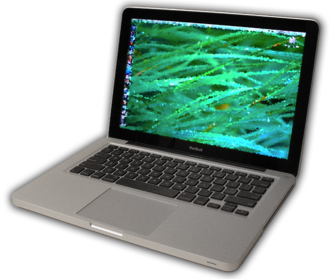Why Your Mac Isn’t Virus Proof
There are plenty of reasons to prefer a Mac to a Windows or Linux machine. Mac computers are better for people who work on creative projects. The hardware and software they use to deal with, manage and edit photo, video, design and audio files is (almost across the board) superior to the hardware and software used in Windows and Linux machines. The ability to sync everything from your laptop to your phone–including text messages!–is also pretty great. And, for a long time, people believed that Macs were safer than Windows or Linux machines.
This wasn’t just a rumor that gained traction in tech circles. “Macs are safer” was even a part of the branding Apple did to sell more machines. They actively promoted the idea that Macs couldn’t get viruses or malware. They promoted the idea that Macs couldn’t get hacked. And the idea that Macs are harder to hack isn’t inherently false. Mac code is based on the UNIX system which, because it was invented for a networked system, has inherent security code and protocols built right into its foundation. Windows machines don’t have that secure foundation and their code has a lot of holes that hackers can exploit.
It is also something of a numbers game. The number of Windows computers dramatically outnumbers the number of Mac computers being used. Why would hackers waste their time developing code to exploit a system that only a small number (relatively speaking) people use? If you play the numbers, you’ll have a higher chance of success in a large pool than you will in a small one.
So it is true that it is easier and more profitable to hack a Windows system–especially one that isn’t protected–but that doesn’t mean it is impossible to hack a Mac. Far from it!
For one thing, Mac computers can run Windows software. Microsoft released “Windows for Mac” years ago. And, if a Mac user chooses to install Windows over Mac OS X or whatever the current OS is named, this will leave the machine more vulnerable to exploitation.
For another, there are hackers and other jerks out there that are working to find ways to exploit Mac systems and they are succeeding. You’ve heard of the two minute hack, right? In 2008, during the PWNTOOWN contest at CanSecWest, Charlie Miller famously managed to take down a MacBook Air in two minutes. Once the hackers knew that it could be done, and done quickly, they turned some of their attention to Apple machines.
And now? Things are starting to look scary. In an article published in January, ZDNet reported on Thunderstrike, a virus for Mac that was almost undetectable and “incredibly hard” to get rid of. Yikes!
So what should you do? Should you dump your Mac for a Windows machine?
Perish the thought! Especially if you work in a design or other creative field!
Instead, take steps to keep your machine (and yourself) protected against those jerks who want to hijack your system.
#1. Build a Moat
Or, in more technical terms, install some malware protection. It really does exist! Most of the major software and OS security companies out there have developed anti-virus and malware protection for Apple devices including Macintosh computers. Trend Micro, for example, started expanding its antivirus for Mac software library a few years ago.
Setting up software to hunt for and detect hacking and malware installation attempts is one of the best ways to keep things from sneaking by you. After all, even the most vigilant and protective people can wind up accidentally downloading problematic things; especially since hackers have gotten really good at covering their tracks.
#2. Common Sense
Malware and antivirus protection is important but it won’t make your system invincible. Don’t leave your computer unattended. Ever. And do not let anybody download something that you haven’t researched thoroughly yourself. Just because someone else hasn’t yet had a problem with downloading from an independent or torrenting site doesn’t mean that you will have the same luck. Use long passwords. Don’t log in to sensitive sites on unsecured Wi-Fi connections. For that matter, try to avoid using unsecured Wi-Fi connections in the first place. Be very wary of open-source software.
The real point is that there is no such thing as an operating system that is hacker-proof. Hackers are smart and getting smarter all the time. They see a secure system as a challenge and aren’t going to be deterred simply because Mac OS is harder to hack than Windows. Protect your system. Protect yourself. The last thing you need is to replace that incredibly expensive Mac because some doofus managed to get a really gross virus past you.





